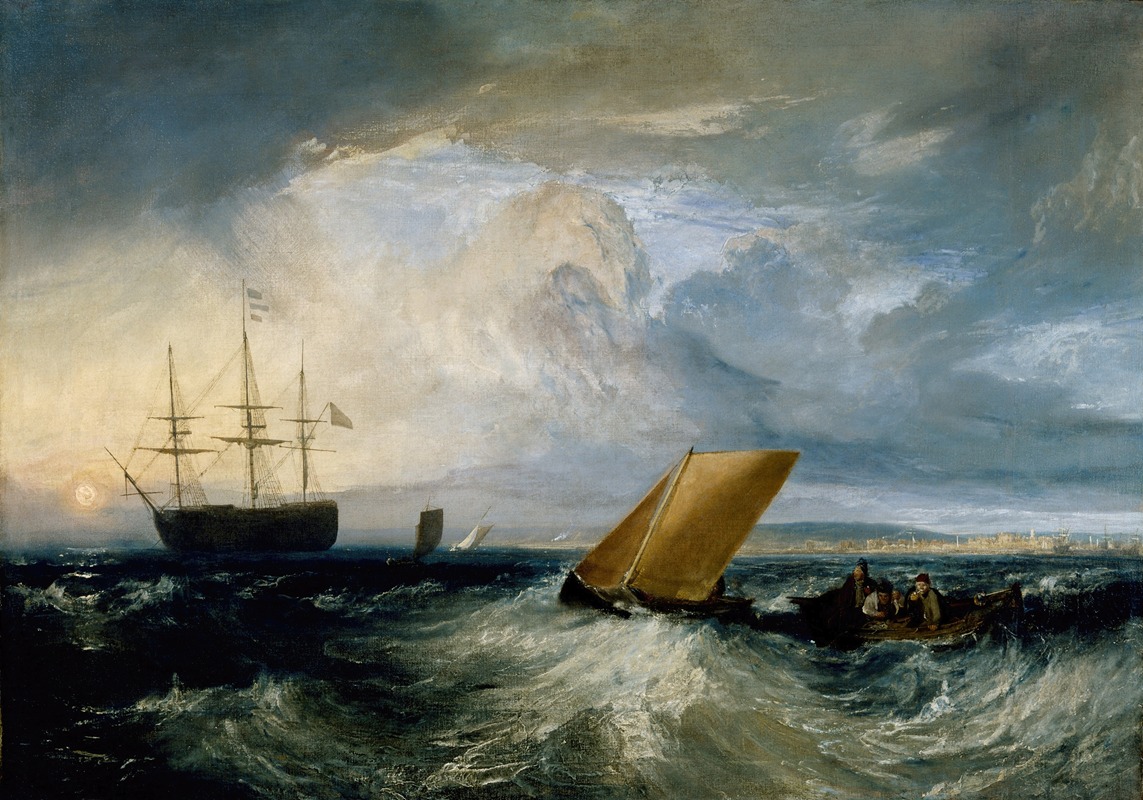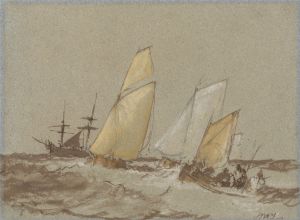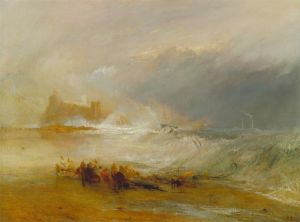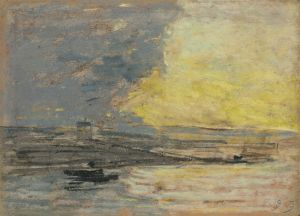
Sheerness as seen from the Nore
A hand-painted replica of Joseph Mallord William Turner’s masterpiece Sheerness as seen from the Nore, meticulously crafted by professional artists to capture the true essence of the original. Each piece is created with museum-quality canvas and rare mineral pigments, carefully painted by experienced artists with delicate brushstrokes and rich, layered colors to perfectly recreate the texture of the original artwork. Unlike machine-printed reproductions, this hand-painted version brings the painting to life, infused with the artist’s emotions and skill in every stroke. Whether for personal collection or home decoration, it instantly elevates the artistic atmosphere of any space.
Joseph Mallord William Turner, an eminent English Romantic painter, created the artwork "Sheerness as seen from the Nore" in the early 19th century. Turner, renowned for his expressive colorization, imaginative landscapes, and turbulent marine paintings, is often regarded as a forerunner to Impressionism. His works frequently capture the sublime power of nature and the interplay of light and atmosphere.
"Sheerness as seen from the Nore" is a fine example of Turner's maritime subjects, a theme he explored extensively throughout his career. Sheerness is a town located on the Isle of Sheppey in Kent, England, and it has historically been an important naval and commercial port. The Nore is a sandbank at the mouth of the Thames Estuary, which has served as a significant navigational point for vessels entering and leaving the River Thames.
In this painting, Turner captures the view of Sheerness from the Nore, focusing on the dynamic interaction between the sea and sky. The artwork reflects Turner's fascination with the sea and his ability to convey its vastness and power. The composition likely includes elements such as ships, the coastline, and the expansive sky, all rendered with Turner's characteristic attention to atmospheric effects.
Turner's technique in this painting, as in many of his works, involves the use of loose brushwork and a vibrant palette to create a sense of movement and light. His ability to depict the transient effects of light and weather is evident in the way he portrays the shifting skies and the reflective surfaces of the water. This approach not only captures the physical appearance of the scene but also evokes an emotional response from the viewer, a hallmark of Turner's style.
The painting is part of Turner's broader exploration of Britain's maritime heritage, a subject of great national pride during his lifetime. The early 19th century was a period when Britain was establishing itself as a dominant naval power, and Turner's works often reflect the significance of the sea in British life and history.
"Sheerness as seen from the Nore" is one of many works by Turner that demonstrate his mastery of marine painting and his innovative approach to capturing the natural world. His influence on later artists, particularly the Impressionists, is widely acknowledged, as they adopted similar techniques to explore light and color.
Turner's legacy as a pioneering artist is cemented by his extensive body of work, which continues to be celebrated for its technical brilliance and emotive power. His paintings, including "Sheerness as seen from the Nore," remain significant contributions to the canon of Western art, offering insights into the Romantic era's artistic and cultural context.

















